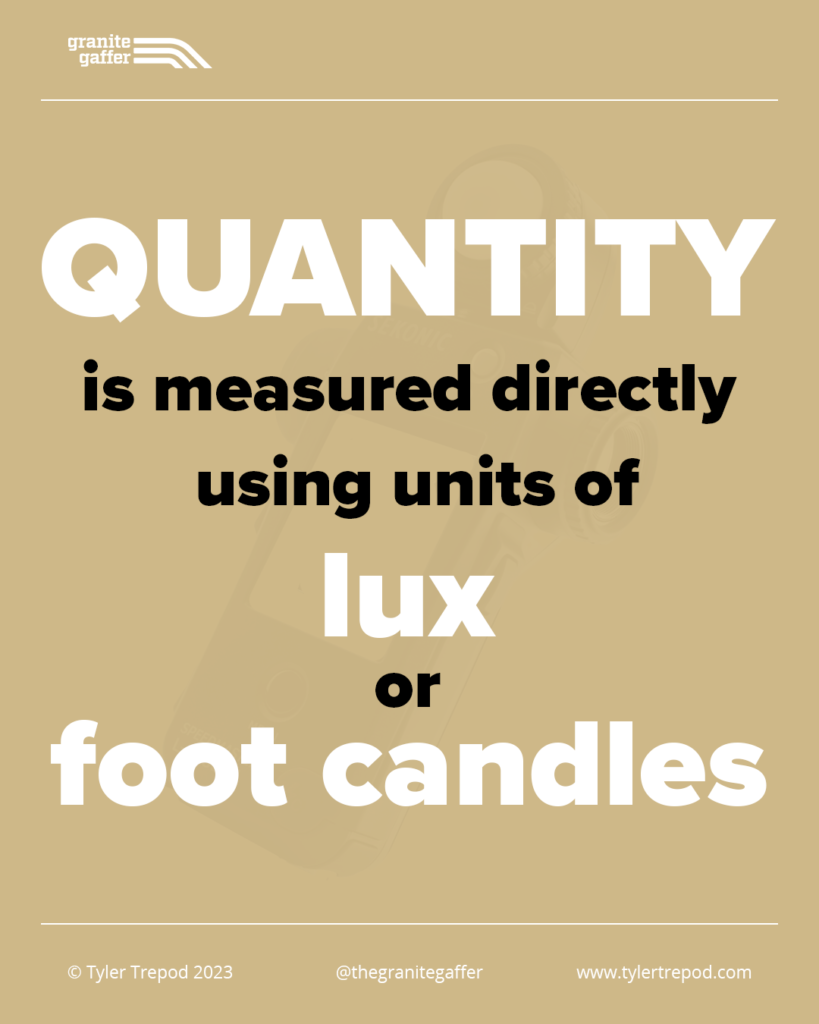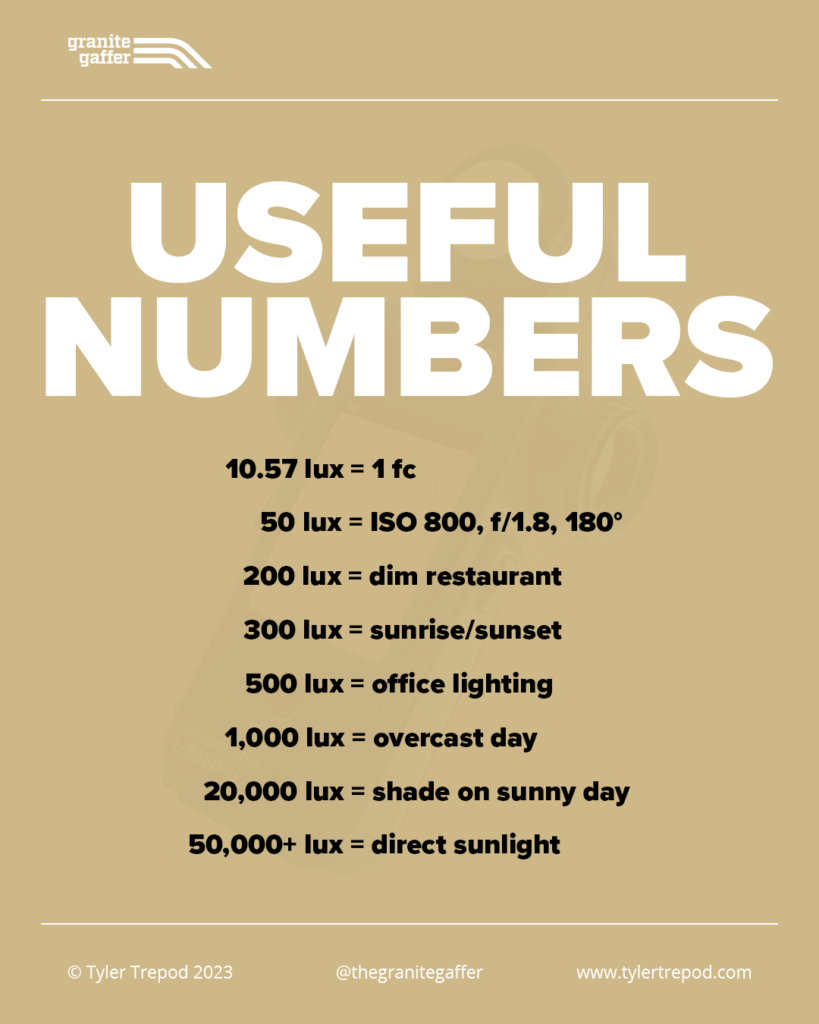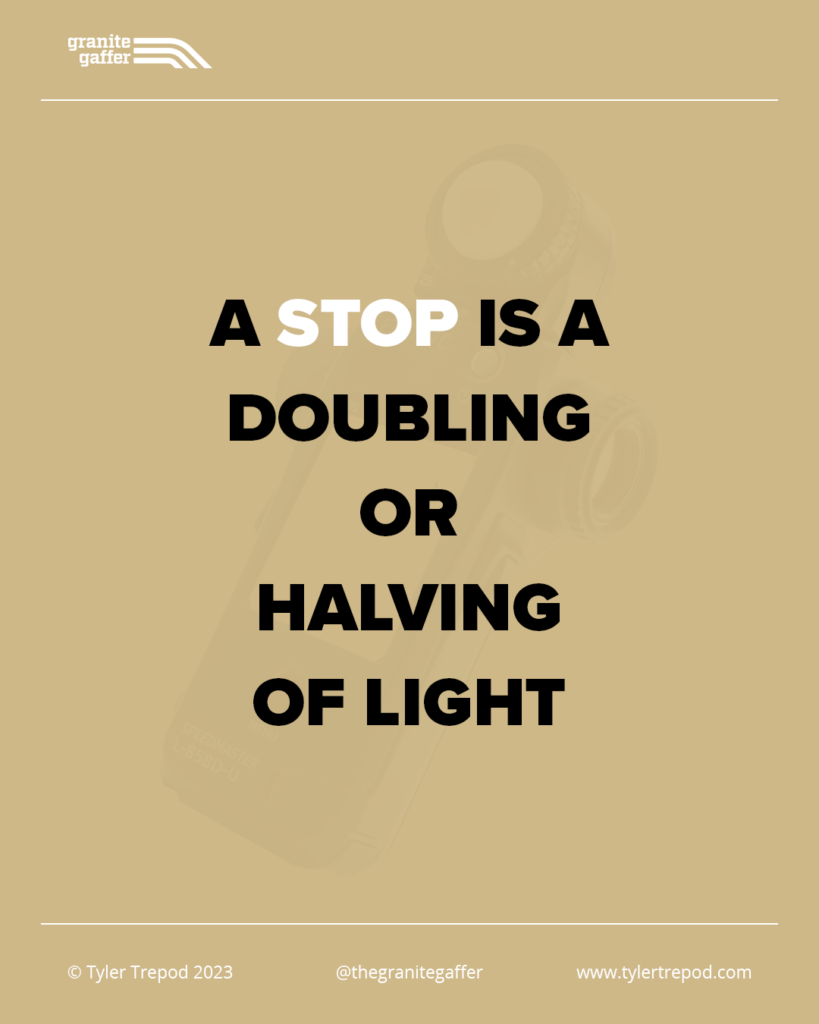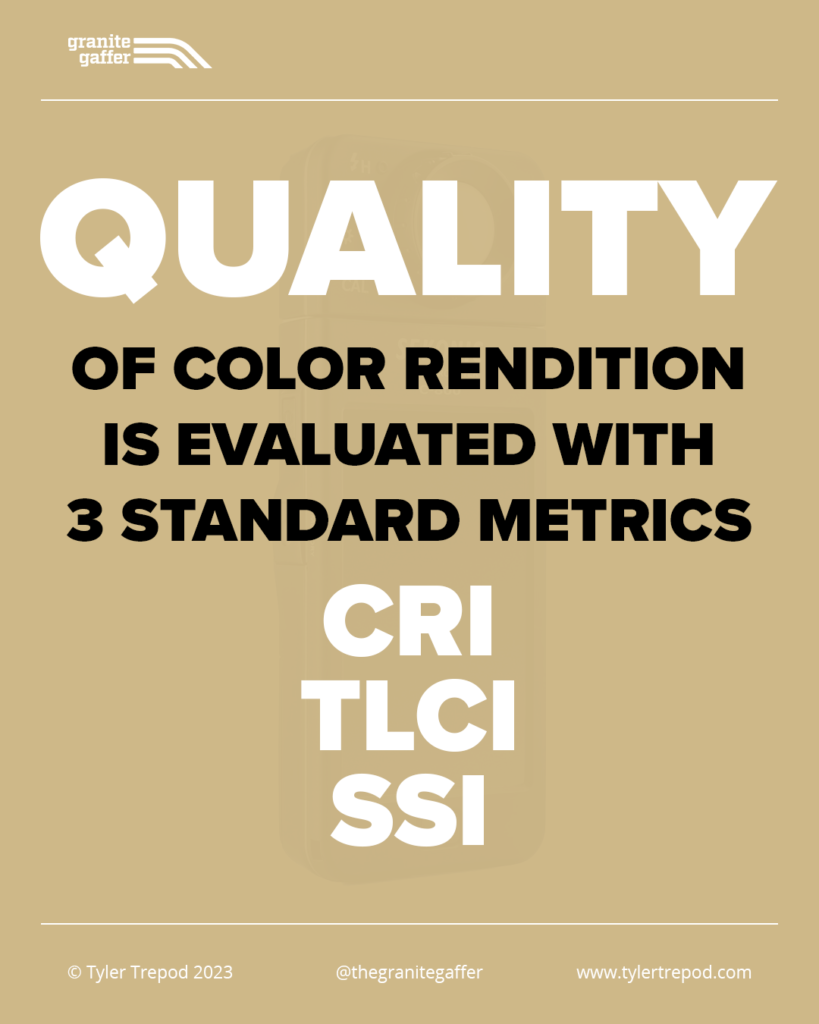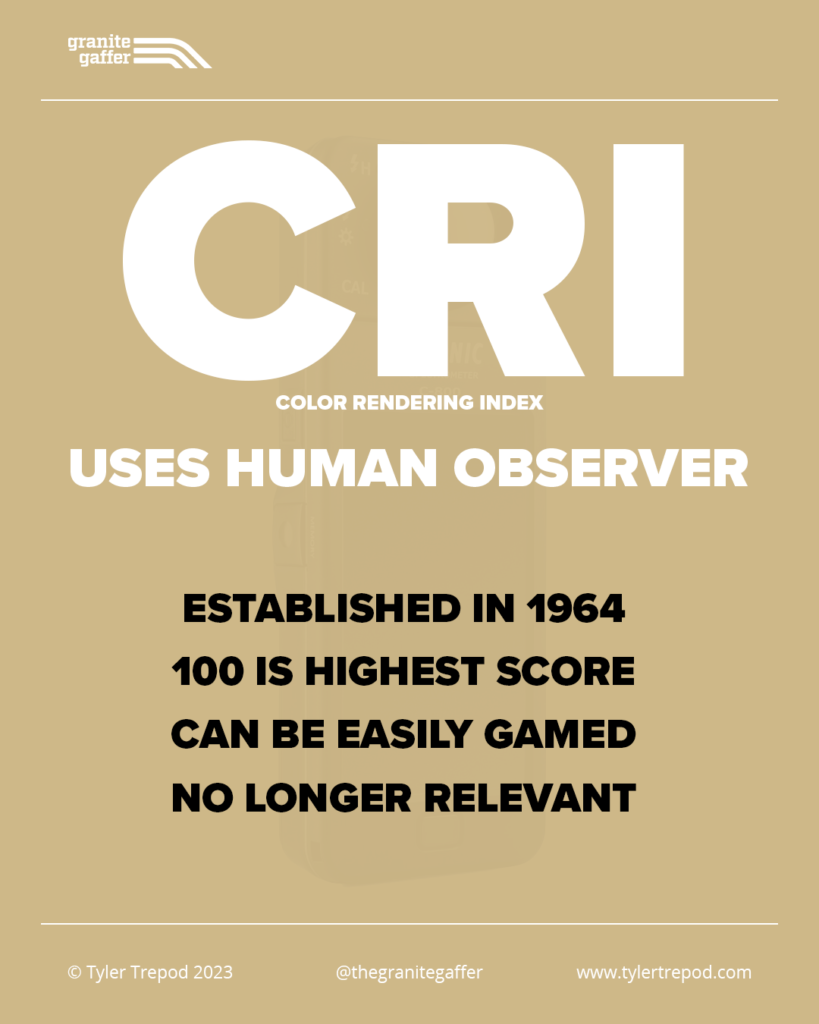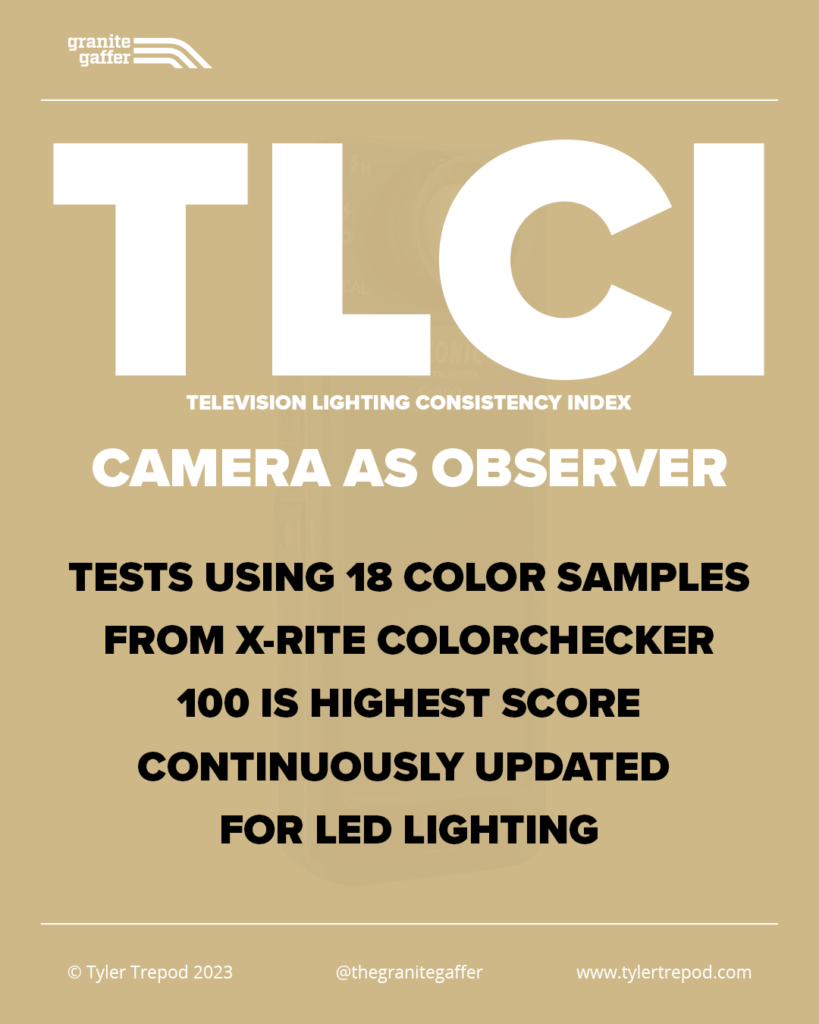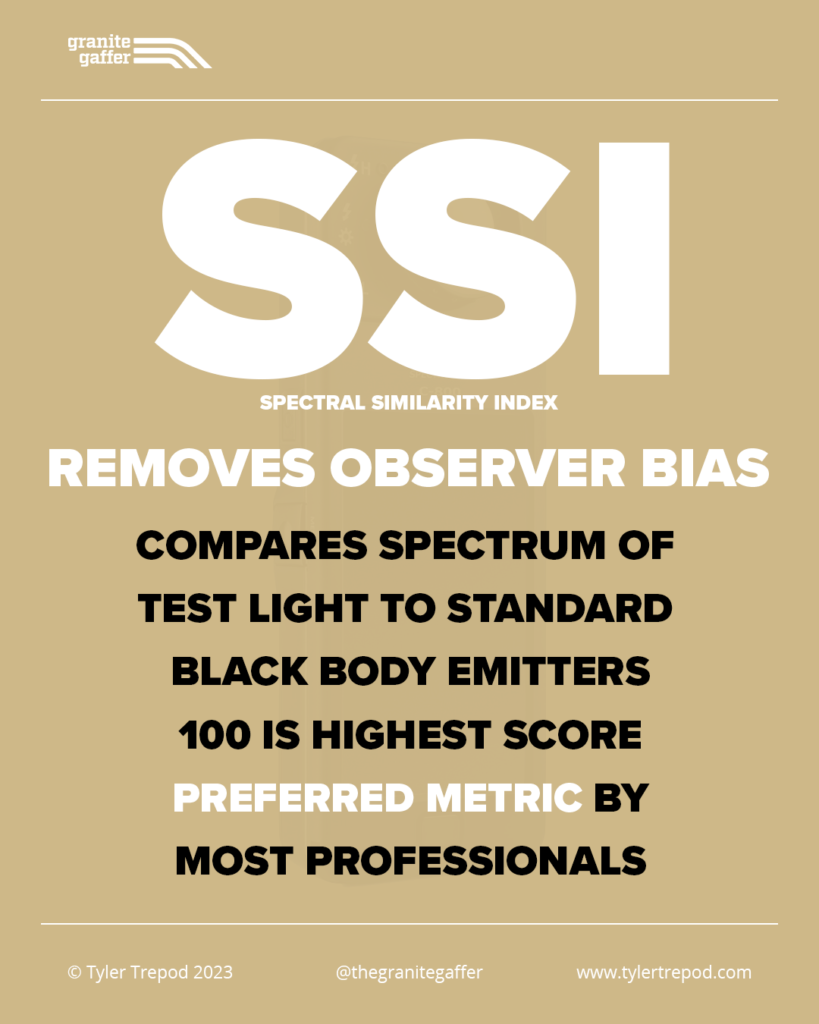guide: how to measure light
Let’s talk about all the ways gaffers and DP’s measure light!
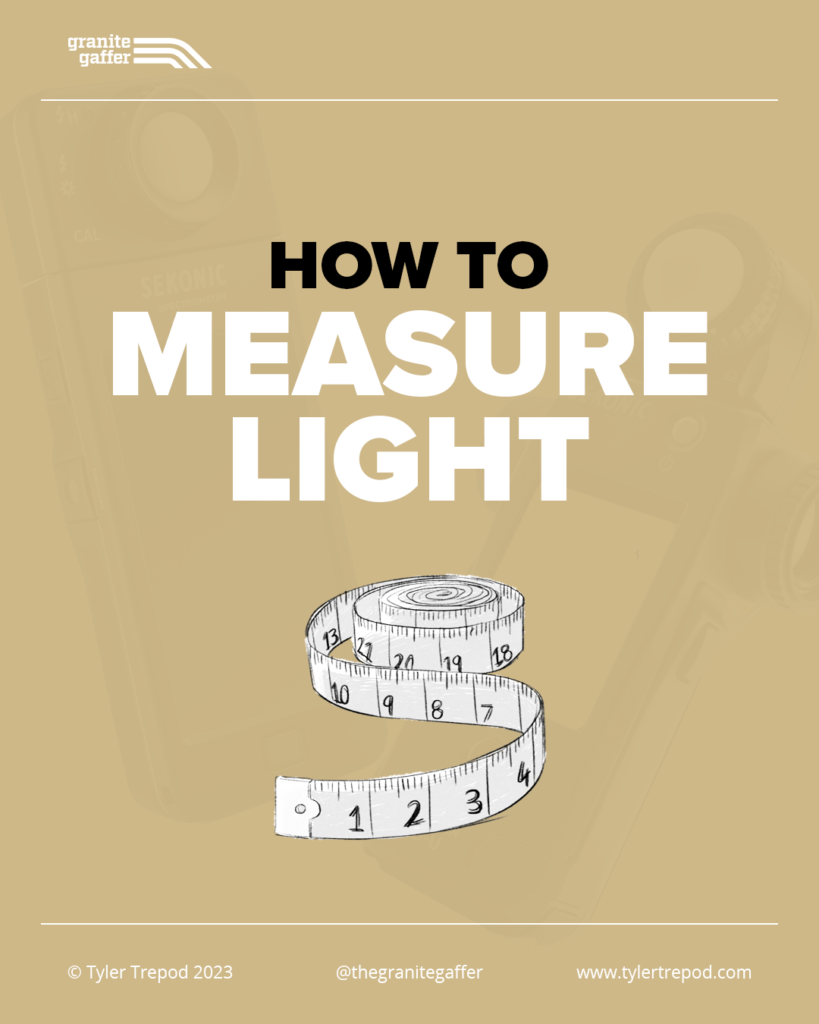
summary
Quantity can be thought of directly in terms of lux or foot candles, or relatively in terms of stops.
Both direct measurements and stops are handy when performing calculations to determine how much light I need.
For example, a komodo has about 6-6.5 stops of dynamic range above middle grey depending on which DP you ask. A blue sky usually comes in around 100,000 lux, and Caucasian skin tones usually max at 60% IRE for proper exposure.
Using some maths, I can calculate 5 stops down from 100,000 lux, (basically do 5x halvings, so 100, 000/2 = 50,000/2 = 25,000 etc.) and get 3,125 lux.
This 3,125 lux is now my approximate target output to expose the skin tones on my subject properly while maintaining highlight detail in that window in the back.
Who cares, just go set up the light I paid for you nerd!
Well, a 600d from 12′ using a spotted F10 fresnel at 100% intensity will give off about 16,000 lux, and muslins and magic cloth cause about a 2.5 stop reduction in light. Meaning this combination at this distance actually gives us a maximum of 3,000 lux. We’d barely expose our subject properly, and certainly not have any overhead room!!!
Quality of light in this case refers to the richness of the spectral output, and is measured via 3 standardized protocols, CRI, TLCI, and SSI.
The most important distinguishing factor between them is who is doing the “observing”, and the bias that causes.
CRI has a human observer as reference, and because of this it does not closely match the way a camera sensor receives light.
TLCI accounts for camera sensor in its calculations, and is a more useful number as we move more into LED technology.
SSI does away with observer bias altogether, and is becoming the gold standard after it’s adoption in the last few years.
